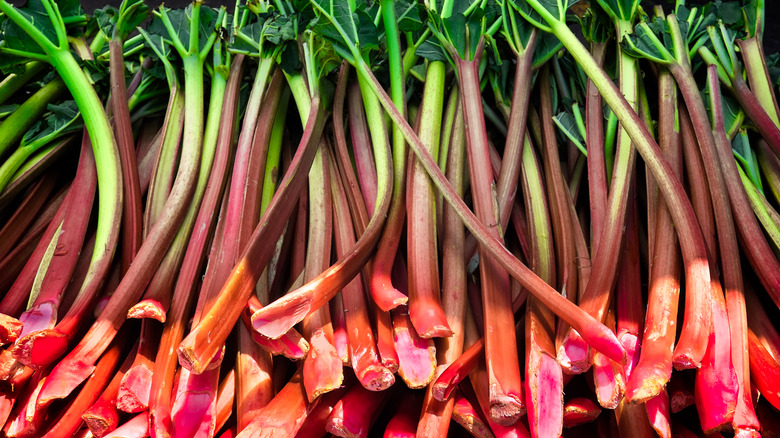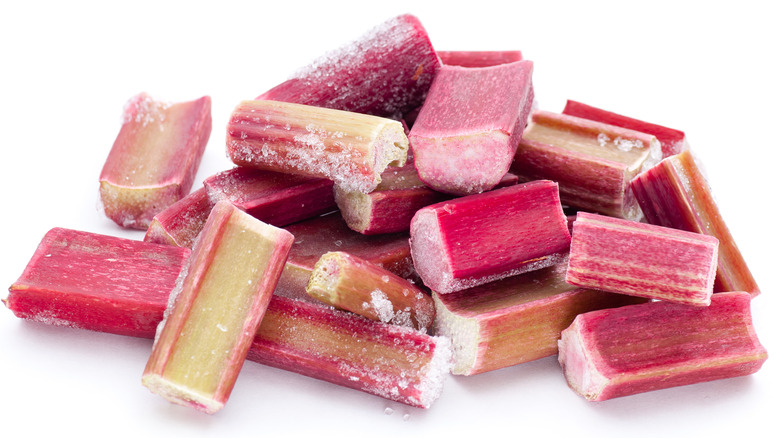What Is The Best Way To Freeze Fresh Rhubarb?
Rhubarb is a delightfully complex food. According to the USDA, the plant itself is an herbaceous perennial, a member of the buckwheat family, and botanically a vegetable. In use, however, it's considered a fruit because rhubarb is so tart that it's nearly always combined with lots of sugar and served as a component in dessert. Rhubarb can be grown in fields or in greenhouses, which means it's available fresh from January through August, depending on where you live in the U.S.
Peak season for field-grown rhubarb is late spring through early summer, and since the season's pretty short, many rhubarb lovers choose to stock up on this delightfully sour fruit, packing the lovely red rhubarb into rustic galettes or jam that can be used on everything from a topping for goat cheese to a glaze for duck breast.
Rhubarb is easy to grow, and Seattle-based Jill Lightner notes that once established, it produces an abundance of fruit, writing: "I have one plant for my household of two, bake more rhubarb-based recipes than I could sensibly bother counting, and hold only the faintest hope that I'll use what's left in the freezer before it's time to start this year's harvest." Curious fans of rhubarb who want a year-round supply may wonder what the best method of freezing rhubarb is.
Tips for freezing rhubarb
First and foremost, rhubarb leaves must be discarded. Washington State University's Master Gardener Program notes that the leaves of rhubarb contain oxalic acid and cause severe poisoning, though, interestingly, they can be safely composted. BBC's Good Food explains that rhubarb, regardless of how it's handled before freezing, will begin to break down as it's thawed, so while the flavor will still be wonderful, it won't be as pretty as fresh rhubarb that's neatly cut and artfully arranged atop a tart.
Rhubarb can be blanched or even fully cooked before freezing, but the very best way to freeze it is actually the simplest. Wash and chop your rhubarb, placing it into plastic freezer bags in a single layer. Put the bags flat on a baking sheet and freeze. That's it! Once the bags are frozen, they're easy to stack in the freezer, and you can either use the entire bag or break off the amount your recipe calls for. It's not even necessary to thaw rhubarb before it goes into an impressive dessert like this strawberry rhubarb custard tart.

